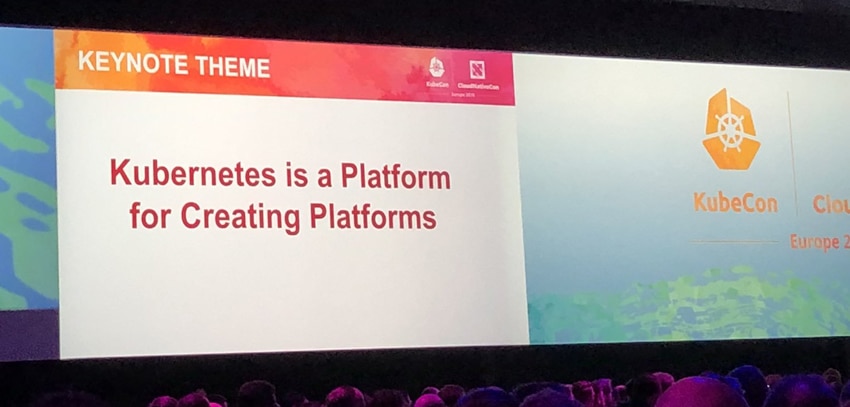I was able to spend 4 days at KubeCon + CloudNativeCon EU 2019, which was put on by the Cloud Native Computing Foundation. The event was held in Barcelona at the Fira Gran Via Conference Centre from May 20th to 23th and drew in 7,700 attendees. This conference is one of three annual meetings put on by CNCF to discuss Kubernetes (K8S) and computing in the cloud. Below is a summary of the announcements made at the convention as well as other items that I found interesting.

On the first day of the conference the CNCF gave an update on what was happening with the various CNCF projects. If a project is selected by CNCF it gives that project a sense of legitimacy and makes it stand out in a very crowded field. CNCF projects are broken out into various categories; Sandbox, Incubator and Graduated. There are now 38 CNCF projects; 6 Graduated, 16 Incubator and 16 Sandbox.
At the conference it was announced that Fluentd, an open source data collector and unified logging layer, was placed into the graduated category. Linkerd (secure service mesh), Helm v3.0 (application packaging), Harbor v1.8 (container repository), Rook 1.0 (storage orchestration), CRI-O (container run-time), TiKV (a unifying distributed storage layer) were placed into the incubator stage. OpenEBS, (container attached storage) was placed into Sandbox. The CNCF also announced that OpenCensus and OpenTracing are merging into a product called OpenTelemetry.
Kong, a scalable and distributed microservice abstraction layer, was accepted as a Gold Member in CNCF, bringing CNCF to over 400 members.
Many announcements were made by vendors during the event. A few that caught my eye:
- Rancher Labs announced Rio, a MicroPAAS that runs on any conformant K8S cluster.
- VMware announced a CSI plugin that will allow for persistent volumes on vSphere storage and that it will support multi-vCenter and multi-Datacenter configurations with volume and raw mounts.
- VMware released Velero 1.0, an open source backup and restore, disaster recovery, Kubernetes migration tool. Velero comes to VMware via its Heptio acquisition and was formally known as ARK.
- Microsoft announced Service Mesh Interface (SMI) which defines a set of common, portable APIs that provide developers with interoperability across different service mesh technologies including Istio, Linkerd, and Consul Connect.
- Oracle, which had a large booth at the conference, announced that Oracle Cloud Infrastructure Broker for Kubernetes clusters is now generally available as open source software.
CNCF wasn’t just about announcements. The CNCF brought in many people to discuss running and maintaining K8S in production environments. The folks at Spotify shared how they accidentally deleted two of their three Kubernetes clusters during a migration, and then how they were able to recover. Conde Nast who publish Vogue, GQ and Wired discussed their journey to Kubernetes and how they rolled out a unified platform across different regions using cloud native computing.
Walking the show floor, I was pleased to see many of the same vendors that I saw at my first KubeCon in Seattle three years ago, as well as quite a few new ones. K8S has reached a level of maturity where we are seeing hardware designed specifically for K8S, such as Diamanti, a hyperconverged K8S appliance, and Softiron, a Ceph storage array that runs on bespoken hardware. For security Twistlock had a strong presence at the conference. Rancher Labs continues to innovate and announced an edge K8S distribution called K3S. I am impressed with how Dynatrace is using AI and automation in their K8S monitoring tool. Canonical (the makers of Ubuntu) had a large presence and is investing heavily in K8S deployment tools.
My big takeaway from KubeCon is that K8S has reached a level of maturity where no longer will it be just leading edge companies that deploy K8S but, within the next two years, we will see mainstream companies use it for greenfield application deployment and within 5 years we will see major corporations, invest their time and capital to convert legacy applications to K8S.




 Amazon
Amazon